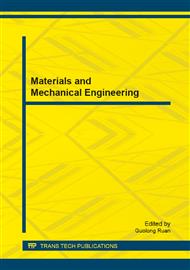p.258
p.264
p.272
p.278
p.285
p.291
p.297
p.302
p.310
Influences of Fracture Angle on the Ultrasonic Compressional Wave Velocity
Abstract:
In this article, we prepare the physical model with the high density epoxy resin and different sizes of coin shaped silicone pieces which can simulate the directional arrangement of fracture medium. On the basis of this, we analyze the influences of fracture angle on the ultrasonic compressional wave velocity using the pulse transmission method and compare the experimental results with the Hudson effective medium model. The experimental results show that, velocity decreases linearly with the increase of fracture angle within the interval of [0°~90°]. In a similar aspect ratio and same angle case, the increase of fracture porosity will result in the decrease of the velocity which is weakened by the increase of fracture porosity. At high fracture porosity, fracture angle becomes the important influence factor on the velocity changing. The calculation results of the Hudson model have a small deviation which is less than 5% compared with the experimental results but show a difference in different angle interval. The combination of the two methods will provide a certain basis for the indoor experiment and the measurement of the velocity in field.
Info:
Periodical:
Pages:
285-290
Citation:
Online since:
February 2014
Authors:
Price:
Сopyright:
© 2014 Trans Tech Publications Ltd. All Rights Reserved
Share:
Citation:


